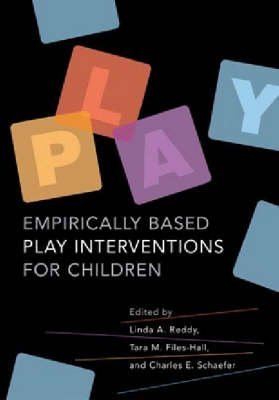Synopsis
Empirically Based Play Interventions for Children is a compilation of innovative, well-designed play interventions, presented for the first time in one text. Play therapy is the oldest and most popular form of child therapy in clinical practice and is widely considered by practitioners to be uniquely responsive to children's developmental needs. Play promotes normal child development and can help alleviate emotional and behavioral difficulties. Even so, play-based interventions have often been criticized for the lack of an empirical base to prove their efficacy. In an era of cost-containment, the need to provide evidence of the effectiveness of interventions is increasingly important to gain the general acceptance of third-party payers, mental health professionals, and consumers.
This book answers the call from professional and managed-care organizations for research-based treatment methods with proven efficacy. It describes a range of play interventions that feature flexibility in service delivery and across settings, child populations, and age groups.
From the Inside Flap
Play is a universal form of communication for children that promotes healthy cognitive, language, physical, and social development. Incorporating play into child therapy can therefore help children who are having difficulties in one or more of these developmental areas. For over 70 years, play therapy has been recognized as an effective method for targeting specific behaviors and competencies to help children communicate their thoughts, feelings, and experiences, and to refine their current skills and learn new ones. This book is a comprehensive reference for clinicians and researchers that provides well-established, theoretically-based, and flexible interventions both directive and nondirective to meet the growing and diverse needs of today's children and families. This updated edition presents new research on play therapy treatment models and agents that have shown significant promise in treating a variety of child disorders including autism. Authors also consider implementation issues arising from new mental health policies and initiatives, including integrated health care systems and the Affordable Care Act. Each chapter is carefully organized to include the theoretical basis and objectives of various innovative play interventions, key treatment ingredients and processes, and recommendations for replication and transportability to other settings. Detailed vignettes illustrate how these interventions can be used in clinical practice.
"About this title" may belong to another edition of this title.
